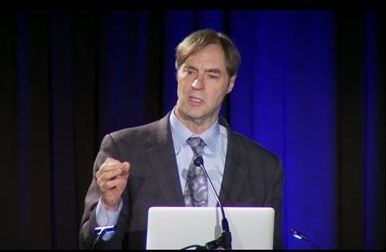|
Word Gems
exploring self-realization, sacred personhood, and full humanity
Dr. Stephen C. Meyer's
Scientific Evidence For A Creator
return to 'scientific evidence' main-page
 |
| Dr. Stephen C. Meyer |
quoted from Dr. Meyer's writing, Scientic Evidence for a Creator
EVIDENCE OF DESIGN IN LIVING
cells is not the only such evidence in nature.
Modern physics now reveals evidence of
intelligent design in the very fabric of the
universe. Since the 1950s and 1960s,
physicists have recognized that the initial
conditions and the laws and constants of
physics are finely tuned, against all odds, to
make life possible.
Even extremely slight alterations in the
values of many independent factors—such as
the expansion rate of the universe, the speed
of light, the masses of quarks, and the precise
strength of gravitational or electromagnetic
attraction—would render life impossible.
Physicists refer to these factors as
“anthropic coincidences,” and to the fortunate
convergence of all these coincidences as the
“fine-tuning of the universe.”
Many physicists have noted that this fine-
tuning strongly suggests design by a preexist-
ent intelligence. Physicist Paul Davies has said
that “the impression of design is overwhelm-
ing.” Fred Hoyle argued, “A commonsense
interpretation of the facts suggests that a su-
perintellect has monkeyed with physics, as
well as chemistry and biology.” Many physi-
cists now concur. They would argue that—in
effect—these parameters appear finely tuned
to make life possible because someone care-
fully fine-tuned them.
To explain the vast improbabilities asso-
ciated with these fine-tuning parameters,
some physicists, such as Lawrence Krauss and
Leonard Susskind, have postulated not a fine-
tuner or intelligent designer, but instead, the
existence of a vast number of other parallel
universes. This multiverse concept posits the
existence of many other universes, each with
different sets of physical parameters. In so
doing, it attempts to show that a set of fine-
tuning parameters necessary for life would—
in all probability—inevitably arise somewhere
in some universe, since this multiplicity of
new universes would vastly increase the num-
ber of opportunities for generating a life-
friendly universe.
Multiverse advocates not only posit a
great multiplicity of other universes, they also
posit the existence of some universe-generat-
ing mechanism to explain where these other
universes came from. It’s important to under-
stand why they must do this.
Most proponents think of the different
universes that they postulate as causally
isolated or disconnected from each other.
Thus, they do not expect to have any direct
observational evidence of universes other
than our own. Consequently, nothing that
happens in one universe should have any
effect on things that happen in another
universe.
Nor would events in one universe affect
the probability of events in another universe,
including the probabilities of whatever events
were responsible for setting the values of the
fine-tuning parameters in another universe—
such as ours. As science writer Clifford
Longley explains the concept: “There could
have been millions and millions of different
universes created each with different dial
settings of the fundamental ratios and
constants, so many in fact that the right set
was bound to turn up by sheer chance.”
Yet if all the different universes were
produced by the same underlying causal
mechanism, then it would be possible to con-
ceive of our universe as the winner of a cos-
mic lottery, where some winning universe
with just the right laws, constants, and/or ini-
tial conditions, would eventually emerge.
Postulating a “universe-generating machine”
could conceivably render the probability of
getting a universe with life-friendly condi-
tions quite high, and, in the process, explain
the fine-tuning as the result of a randomizing
element—like the action of a giant slot ma-
chine or a roulette wheel turning out either
life-conducive winners or life-unfriendly los-
ers with each spin or pull on the handle.
But, as I explain in my new book Return of
the God Hypothesis in much more detail,
advocates of these multiverse proposals have
overlooked an obvious problem. The specula-
tive cosmologies (such as inflationary cosmol-
ogy and string theory) they propose for gen-
erating alternative universes invariably in-
voke mechanisms that themselves require fine-
tuning, thus begging the question as to the
origin of that prior fine-tuning.
Indeed, all the various materialistic explanations for the
origin of the fine-tuning—i.e., the explana-
tions that attempt to explain the fine-tuning
without invoking intelligent design—invaria-
bly invoke prior unexplained fine-tuning.
Moreover, the fine-tuning of the universe
exhibits precisely those features—extreme im-
probability and functional specification—that
invariably trigger an awareness of, and justify
an inference to, intelligent design.
Because the multiverse theory cannot
explain fine-tuning without invoking prior
fine-tuning, and because the fine-tuning of a
physical system to accomplish a recognizable
or propitious end is exactly the kind of thing
we know intelligent agents do, it follows that
intelligent design stands as the best explana-
tion for the fine-tuning of the universe. And
that makes intelligent design detectable in
both the physical parameters of the universe
and the information-bearing properties of
life.
|
